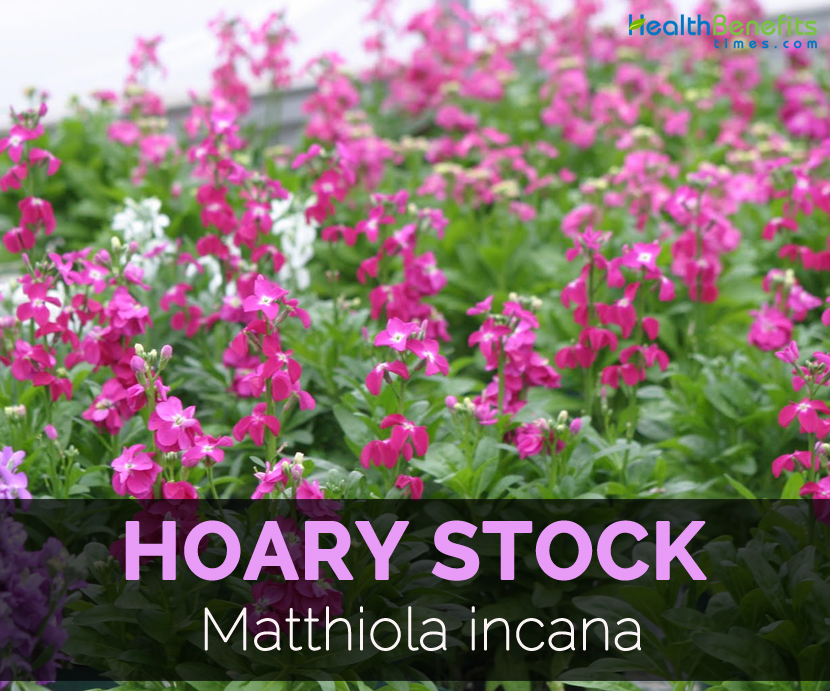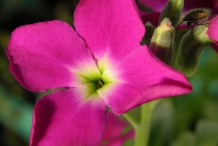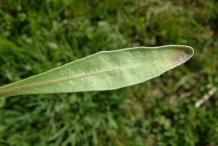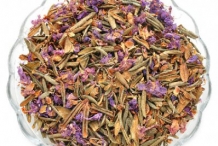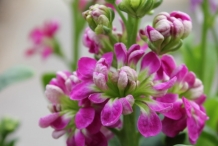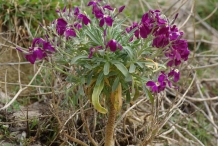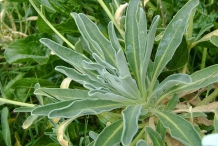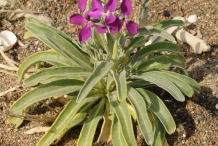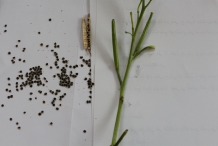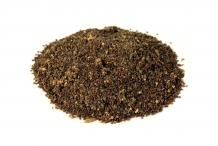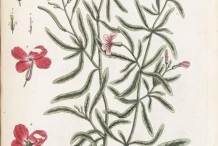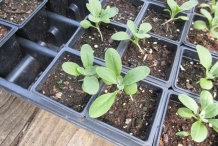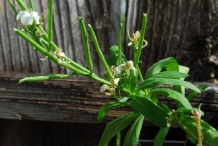| Hoary Stock Quick Facts |
| Name: |
Hoary Stock |
| Scientific Name: |
Matthiola incana |
| Origin |
It is native to the coastal areas of southern and western Europe. It has been introduced into the New World and Australia. |
| Colors |
Brown |
| Shapes |
Sub-orbicular, winged, 2 mm across |
Hoary stock (Matthiola incana) is a biennial or perennial tomentose herb growing 15 to 75 cm high. Hoary stock is also commonly known as Brampton Stock, Gillyflower, Common Stock, Hoary Stock, Imperial Stock, Stock, Gilli-flower, Brompton Stock, Stock, July Flower, Garden Stock and Tenweek Stock. It is unbranched or has sparingly basal branching. Basal leaves are rosulate and cauline leaves are sessile or shortly petiolate, 3 to 16 cm long, 1 to 2 cm broad, oblanceolate with apex rounded and attenuate base. The racemes are 10 to 30 flowered. Sepals measure 10 to 15 by 2 to 3 mm, linear-lanceolate to narrowly oblong. Petals are pink, purple, violet, red or white about 20 to 30 by 7 to 15 mm, obovate to ovate, rounded or emarginated apex, long clawed. There are 7 to 9 stamens and filaments about 5 to 8 mm, style 1 to 5 mm and 2 to 4 mm anthers. Stigma is erect, sessile and bilobed. The seed pods or siliquae measures 2.5 to 4 mm wide, 10 to 15 cm long and is pubescent to glandular. Seeds are brown, winged, sub-orbicular and measures 2 mm across.
Traditional uses
The infusion is used for treating cancer and if mixed with wine, it acts as an antidote to poisonous bites.
How to Eat
Flowers are consumed as a vegetable or used as a garnish in sweet desserts.
References:
https://www.itis.gov/servlet/SingleRpt/SingleRpt?search_topic=TSN&search_value=23249#null
https://davesgarden.com/guides/pf/go/1386/
https://www.pfaf.org/USER/Plant.aspx?LatinName=Matthiola+incana
Comments
comments


